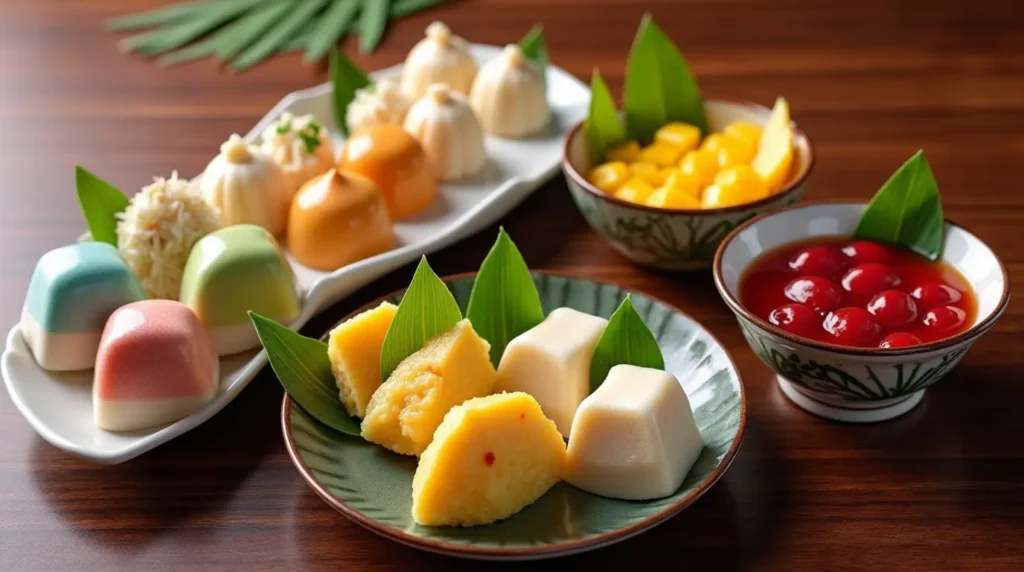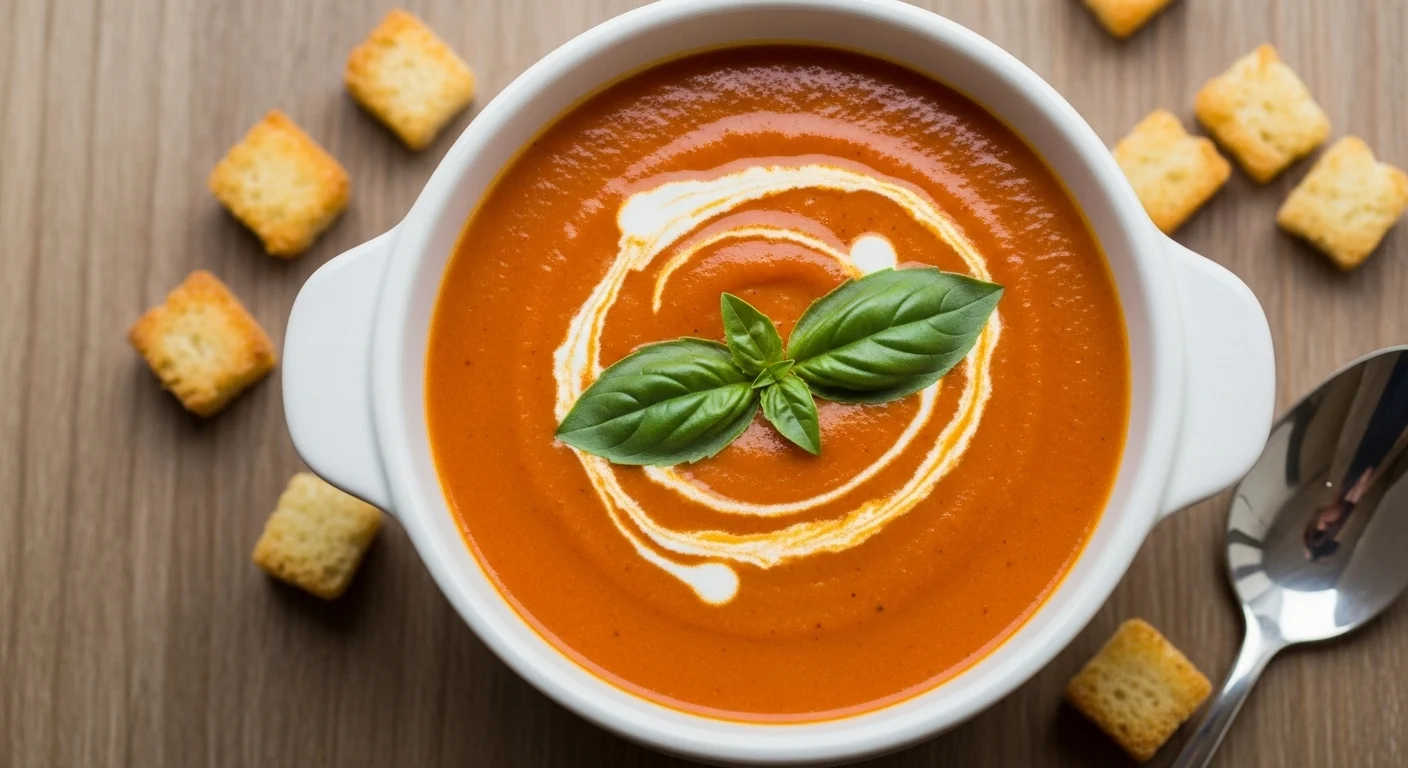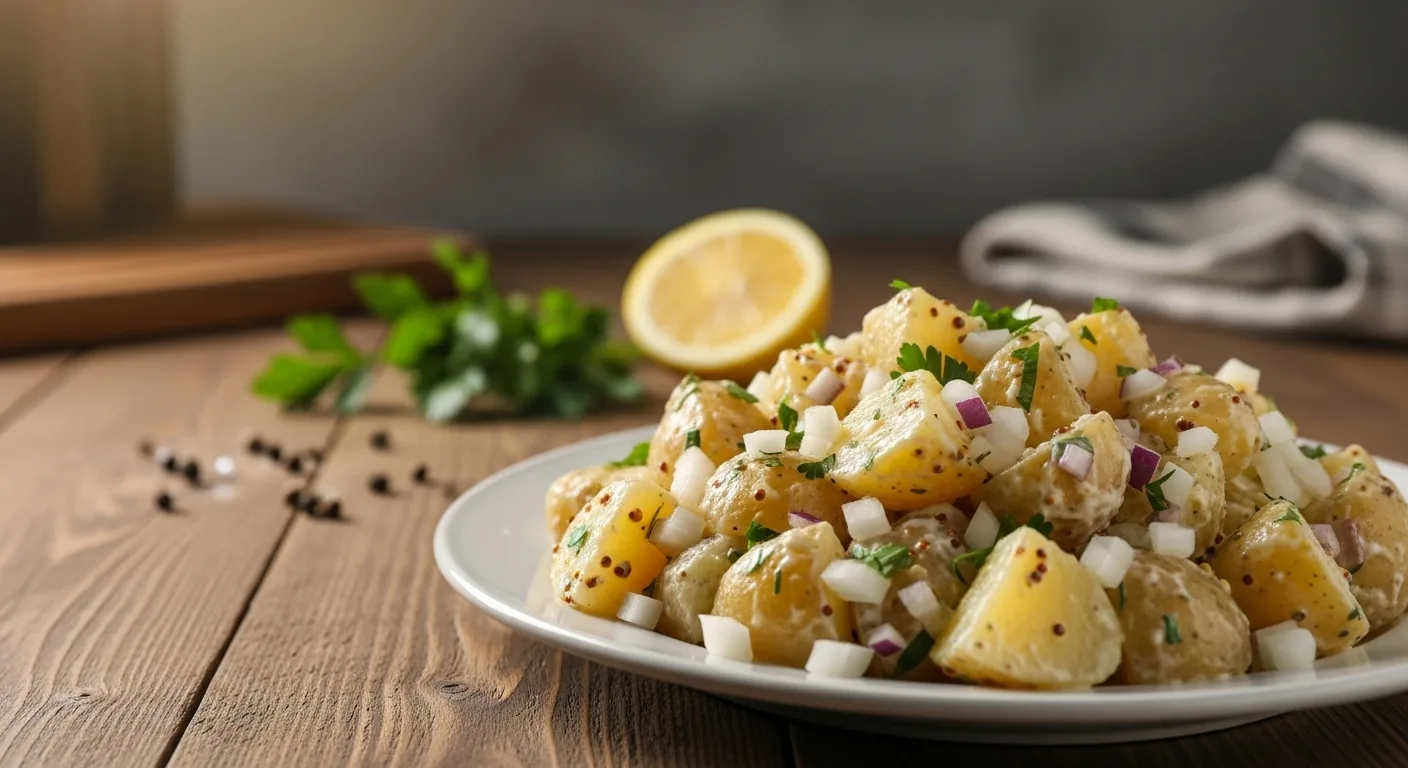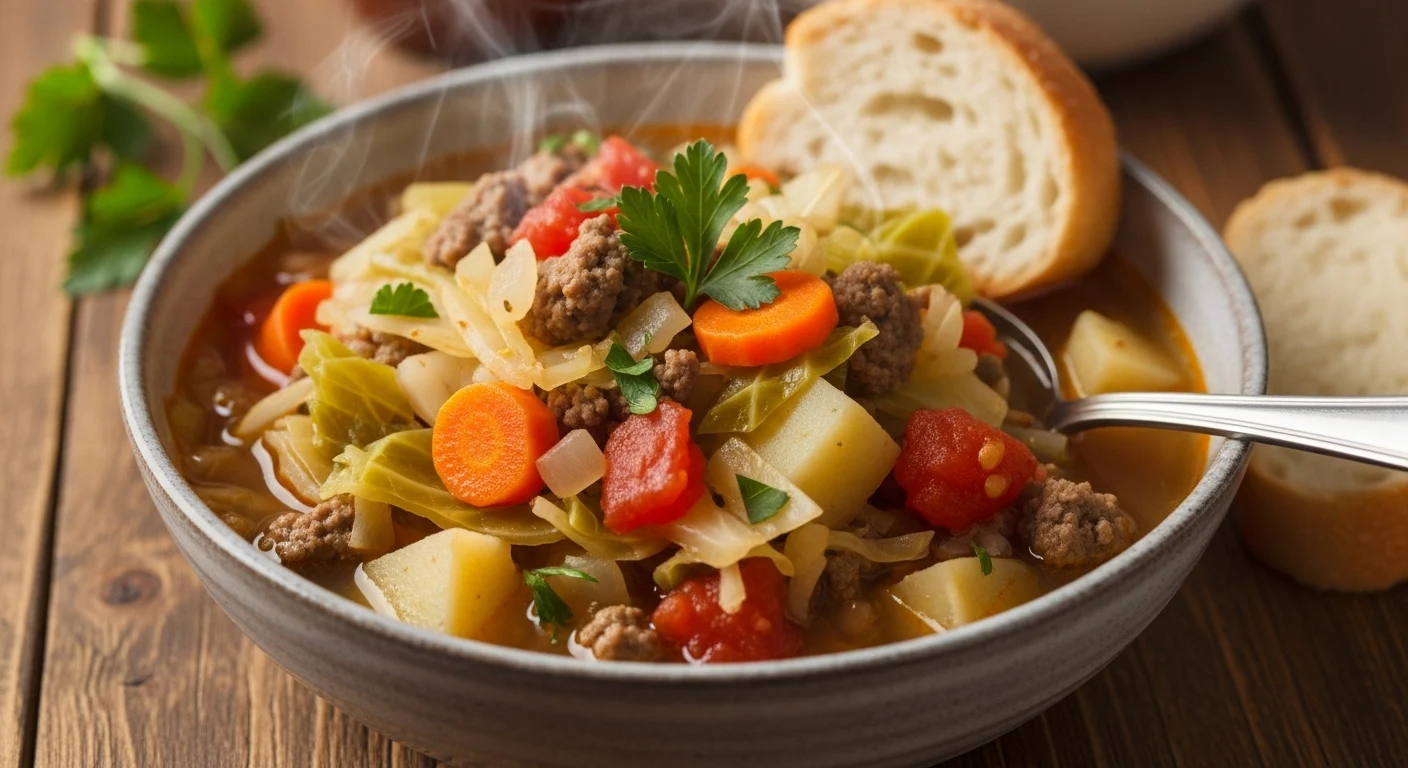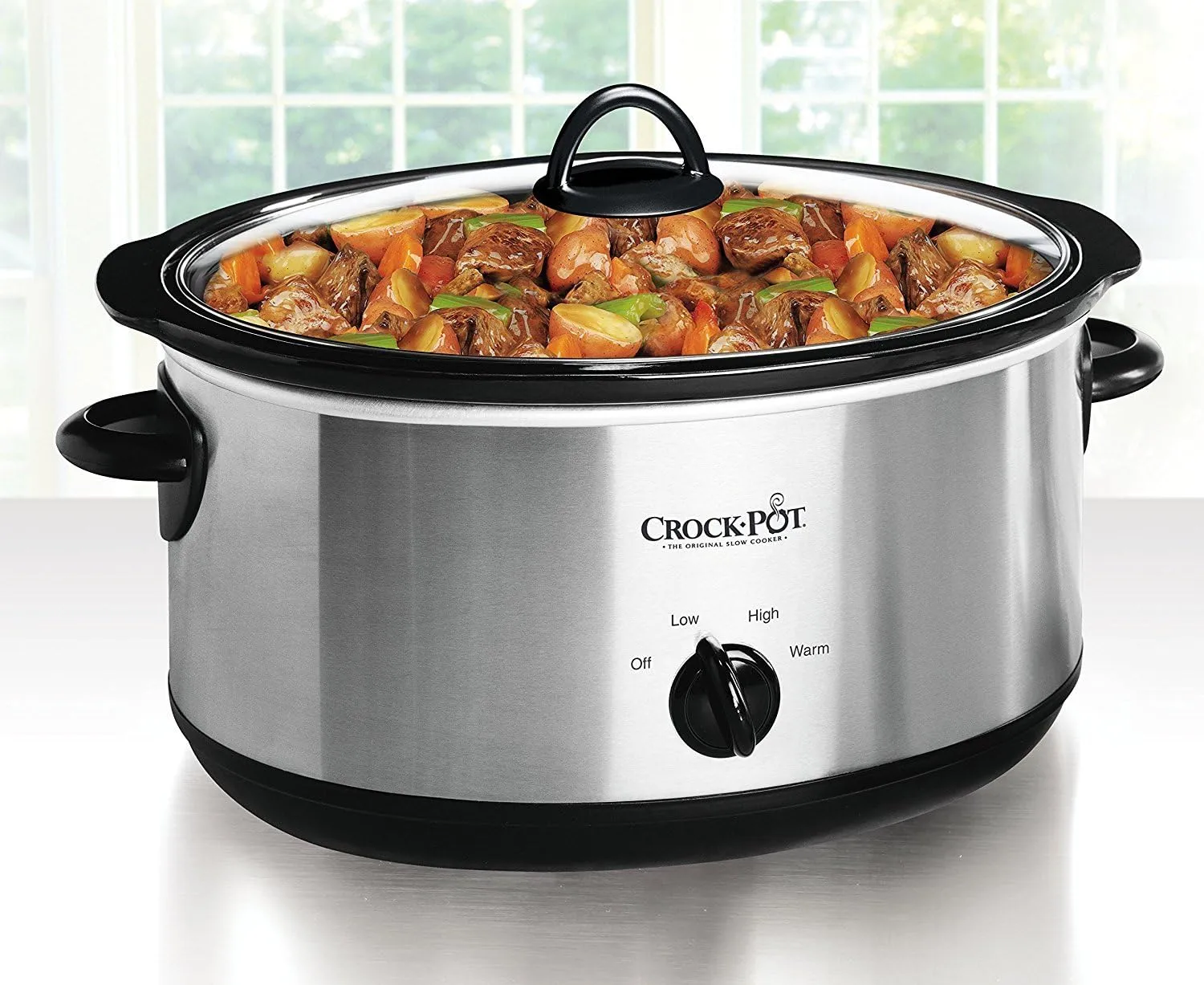What makes Asian desserts so irresistible? They are different from sweets in other parts of the world. Let’s explore traditional Asian desserts together! From Japan’s rice-based treats to Thailand‘s creamy sweets, we’ll discover the rich dessert traditions of Asia.
Asian desserts are known for their unique flavors and textures. They use special ingredients like matcha, red bean, and sticky rice. Each dessert is a special part of their culture. Try Mochi’s chewiness or Bánh Flan’s smoothness to see what you think.
Table of Contents
ToggleKey Takeaways
- Explore diverse Asian desserts made from unique ingredients like matcha and red bean.
- Learn about popular treats from Japan, Thailand, Korea, and more.
- Discover how each dessert represents the culinary heritage of its region.
- Find traditional and innovative recipes that capture the essence of Asian sweets.
- Indulge in flavors and textures that distinguish Asian cuisine dessert from others.
Introduction to Asian Desserts
The world of Asian desserts is full of flavors and textures. It attracts food lovers from everywhere. In Hong Kong, young people are loving traditional Chinese desserts again, showing a big cultural comeback.
The unique ingredients and techniques
Asian desserts use special ingredients like pandan, red bean paste, and tapioca. Each country has its own dessert-making ways. For example, Japan started using chocolate in 1614, but Thai mango sticky rice is simple yet tasty.
Foodland helps people make these desserts at home. They share recipes, tips, and stories. Their blog has everything from Indian Gulab Jamun to Matcha Green Tea Mochi, perfect for sharing with loved ones.
Why Asian desserts stand out
Asian desserts are special because of their variety and cultural importance. In China, desserts are enjoyed after meals or with tea. They use many ingredients, like mango, pineapple, glutinous rice, and lotus seeds. The ways to make them are also diverse, including steaming, frying, and boiling.
These desserts are unique because they mix old and new tastes. Dan ta egg tarts are famous in Hong Kong and Macau. Ice desserts without cream or eggs show the region’s creativity. This mix of tradition and new ideas is why people love to find “asian desserts near me”. They want to try these complex flavors and textures.
Japanese Delights: Mochi, Dorayaki, and More
The world of Japanese desserts is full of unique textures and flavors. Mochi and dorayaki are two treats you must try. They show Japan’s skill in making sweets.
Mochi is made from sticky rice and is chewy. It’s kneaded for 5 minutes to get the right stretch. It’s often filled with sweet red bean paste, but you can find other fillings too.
Preparing mochi is fun. You can microwave the filling for 3 minutes or steam it for 30. This makes it easy to make at home.
Dorayaki is a sweet treat with azuki bean paste between two pancakes. The batter needs to rest for 30 minutes. It should be thick but pourable.
- Recipe yields approximately 6 pancakes, making 3 dorayaki.
- Each pancake cooks for about 30 seconds per side.
- The mochi dough requires about 5 minutes of kneading for ideal texture.
- Total preparation and cooking time is estimated at 1 hour and 15 minutes.
- Instructions suggest using a sport cap bottle for precise batter pouring.
- The batter texture should allow drawing a figure 8 that disappears after a few seconds.
| Step | Time | Details |
|---|---|---|
| Resting the batter | 30 minutes | Ensures the right consistency for dorayaki pancakes. |
| Microwaving mochi filling | 3 minutes | Quick and effective way to prepare the red bean paste. |
| Cooking pancakes | 30 seconds per side | Flip when 70%-80% of the bubbles have burst. |
| Kneading mochi dough | 5 minutes | Essential for achieving stretchy, perfect mochi. |
| Total preparation and cooking | 1 hour 15 minutes | Full process from start to finish. |
Mochi and dorayaki are loved worldwide. Recipes like these get high ratings. They have around 925 calories per serving. These Japanese desserts are not just tasty but also a cultural journey.
Sweet Treats from Thailand: Mango Sticky Rice & More
The world of Thai desserts is full of delightful treats. Mango Sticky Rice and Thai ice cream are iconic. They mix sweet and tropical flavors with creamy textures.
Classic Mango Sticky Rice
Mango Sticky Rice is Thailand’s national dessert. It’s loved by locals and tourists. The best time to enjoy it is from March to May.
This dish uses four main ingredients: Thai white glutinous rice, coconut milk, salt, and sugar. High-quality mangoes make it special. In Thailand, nam dok mai and ok rong mangoes are used. In North America, Manila, ataulfo, or champagne mangoes are preferred.
To make it, rice is soaked and steamed, then mixed with sweet coconut syrup. Optional crispy mung beans add extra texture.
Natural dyes from pandan leaves and butterfly pea flowers add vibrant colors. This makes the dish visually appealing. It’s a mix of textures and flavors, a must-try for Thai desserts lovers.
Delicious Thai ice creams
Thai ice cream is a must-try, with flavors like durian and coconut. It’s refreshing and perfect with spicy Thai dishes. Enjoy it on its own or with other Thai desserts for a cool treat.
Thai ice cream’s unique flavors show off the country’s culinary traditions. From coconut to durian, there’s something for everyone. Like Mango Sticky Rice, these ice creams highlight the special flavors of Thai cuisine.
Korean Confections: Bingsu, Tteok, and More
Korean desserts like Bingsu and Tteok are very special. They taste great and have deep cultural meaning.
These desserts mix history, taste, and creativity in a unique way. They are a must-try for anyone interested in Korean sweets.
Popular types of Bingsu
Bingsu is a favorite Korean dessert during hot summers. It has a long history, dating back to the Joseon dynasty in 1392. The ice used was kept in a special ice warehouse.
The ice shavings in Bingsu are soft and fluffier than other shaved ice desserts. This makes it a refreshing treat.
Patbingsu, or “sweet red bean shaved ice,” is the most traditional type. Injeolmi bingsu features rice cakes coated with soybean powder. The toppings can be anything from fruits to macarons.
This dessert is best shared with loved ones. It’s often served with spoons for everyone to enjoy together.
Traditional Tteok varieties
Tteok, or Korean rice cakes, are a big part of Korean desserts. They come in many types, each with its own taste and texture. Injeolmi is known for its chewy texture and nutty flavor.
Songpyeon is enjoyed during the Korean harvest festival, Chuseok. It’s filled with sweet or nutty ingredients. Baekseolgi is a soft, steamed rice cake often served at celebrations.
Korean rice cakes are sweetened with honey or other sweeteners. They’re enjoyed with tea or other drinks. Tteok is a timeless favorite, offering a taste of Korea’s culinary heritage.
| Bingsu Type | Main Ingredients |
|---|---|
| Patbingsu | Sweet red beans, milk, sweetened condensed milk, fruits |
| Injeolmi Bingsu | Injeolmi rice cakes, roasted soybean flour, milk, sweetened condensed milk |
| Fruit Bingsu | Seasonal fruits, sweetened condensed milk, soft-serve ice cream, milk |
Filipino Favorites: Halo-Halo and Beyond
It’s a mix of shaved ice, evaporated milk, and sweet ingredients like beans and fruits. This dessert is a refreshing treat in the tropical heat.
Halo-Halo shows the Philippines’ rich history through its ingredients. Americans introduced ice, Japanese brought sweet beans, and Spanish added leche flan. It’s a mix of cultures in every bite.
Halo-Halo is now famous worldwide, found in Filipino restaurants in the U.S. It’s a hit at food festivals and markets, with new flavors for everyone. It’s perfect after a meal like chicken adobo or pancit bihon.
“Halo-Halo isn’t just a dessert; it’s a celebration of Filipino culture and its spirit of community and family,” shared a customer at a Jollibee in Los Angeles.
People love to customize Halo-Halo with toppings like nata de coco and boba. You can try different versions like mais con yelo or iskrambol. This makes every Halo-Halo unique.
Here’s a quick look at Halo-Halo and similar desserts from Asia:
| Dessert | Core Ingredients | Influences |
|---|---|---|
| Halo-Halo | Shaved Ice, Evaporated Milk, Sweetened Beans, Fruits | American, Japanese, Spanish |
| Bingsoo | Shaved Ice, Condensed Milk, Fruit | Korean |
| Es Campur | Shaved Ice, Coconut, Jackfruit, Avocado | Indonesian |
Halo-Halo is more than a dessert; it’s a journey into Filipino culture. Enjoy it at a Filipino restaurant or a food festival for a memorable experience.
Vietnamese Desserts: Bánh Flan and Beyond
Vietnamese desserts mix traditional flavors with French touches. Bánh Flan, a caramel custard, is a perfect example. Together, they offer a tasty journey through Vietnam’s dessert history.
How to make Bánh Flan
Bánh Flan is Vietnam’s take on French creme caramel. It has a creamy custard and a caramel top. Here’s how to make it:
- Preheat your oven to 350°F (175°C).
- Caramelize sugar in a saucepan until golden brown and pour it into ramekins.
- In a bowl, beat eggs and mix with milk and vanilla extract.
- Pour the mixture over the caramel in the ramekins.
- Place ramekins in a baking dish filled with hot water and bake for about 45 minutes.
- Let it cool, then refrigerate before serving.
The creamy caramel and smooth texture of Bánh Flan make it a favorite among Vietnamese sweets.
Vietnamese Tapioca Pudding
Vietnamese Tapioca Pudding, or Che Chuoi, combines tapioca pearls, bananas, and coconut milk. It’s sweet and chewy, adding to the variety of Vietnamese sweets. Here’s how to make it:
- Soak tapioca pearls in water for about 30 minutes.
- Cook coconut milk with water and sugar until it reaches a boil.
- Add sliced bananas and cook until tender.
- Strain the tapioca pearls and add them to the coconut milk mixture.
- Let it simmer until the tapioca pearls become translucent.
- Serve warm or chilled, topped with roasted peanuts if desired.
This dish shows the creativity in Vietnamese desserts. With these recipes, you can enjoy Bánh Flan and Vietnamese Tapioca Pudding at home. They are key parts of Vietnamese sweets.
Chinese Desserts You Must Try
Chinese desserts are a world of flavors and textures. They range from creamy and nutty to sweet and fruity. Let’s explore two must-try desserts: mooncakes and black sesame rolls.
Classic Mooncakes
Mooncakes are more than a dessert; they symbolize family and tradition. They have a rich filling, like red bean paste or lotus seed paste, inside a soft crust.
Black Sesame Rolls
Black sesame rolls are a favorite Chinese dessert. Made with black sesame paste, sugar, and rice flour, they offer a chewy delight.
Mooncakes and black sesame rolls are key desserts in Chinese cuisine. They offer a taste of China’s traditions and authentic flavors. Whether you’re trying new desserts or enjoying old favorites, these recipes bring China’s culinary heritage to your table.
Exploring Indian Sweets: Gulab Jamun and More
Gulab Jamun is a beloved Indian sweet loved by many. It’s a key dessert for Diwali desserts and other special days.
The ingredients for Gulab Jamun are carefully picked. They include skimmed milk powder, ghee, semolina, flour, and spices.
Making Gulab Jamun requires precision. Common mistakes include wrong ingredient amounts and frying temperature. It’s important to get the proportions and techniques right.
- Measure ingredients accurately to avoid texture issues.
- Maintain the oil at the right temperature to ensure even cooking.
- Rest the dough adequately to allow gluten development.
- Cook the syrup to the right consistency for proper absorption.
It’s a must-have for Diwali, birthdays, and weddings.
While Gulab Jamun tastes great, it’s high in sugar and fat. It’s best to enjoy it in small amounts. This dessert can be part of a balanced diet if eaten wisely.
| Ingredient | Quantity | Role |
|---|---|---|
| Skimmed milk powder | 1 cup | Provides body and texture |
| Ghee | 2 tbsp | Adds richness |
| Sugar | 3 cups | Makes the syrup |
| Water | 4 ½ cups | Makes the syrup |
| Saffron | Few strands | Flavor and color |
| Cardamom powder | ½ tsp | Spice for aroma |
Making Gulab Jamun at home is healthier than buying it. It’s important to control portions. Adding saffron and cardamom not only tastes great but also has health benefits. You can also try adding pistachios or chocolate chips for extra flavor.
Gulab Jamun is a favorite for its taste and cultural importance. Enjoying it in moderation lets you celebrate while staying healthy.
Unique Pairings: Traditional Asian Dessert Ingredients
Exploring Asian sweets reveals a world of flavors and textures. Ingredients like matcha and red bean paste add depth to desserts. These pairings make desserts more exciting.
Using matcha in desserts
Matcha, a finely ground green tea powder from Japan, is key in many desserts. It gives them a unique umami flavor.
Millennials and Gen Z love matcha desserts for their taste and vibrant green color. They also appreciate the antioxidants in matcha.
The versatility of red bean paste
Red bean paste is a staple in Asian desserts, offering a sweet flavor. This paste adds a smooth texture and taste.
Red bean paste is a favorite in Asian ingredient pairings. Adding it to desserts brings an authentic Asian touch.
The National Restaurant Association’s 2023 forecast highlights matcha and red bean paste. These ingredients are trending in desserts. They add depth and diversity to modern desserts.
Conclusion
Exploring Asian desserts reveals a world where taste, tradition, and new ideas meet. These treats are more than just desserts. They show off culture and history. For example, Japanese mochi has grown 35.3% on American menus in four years.
South Asian desserts like Gulab Jamun also shine. They bring different cultures together through taste.
Korean sweets, like Hotteok, are becoming more popular. They make up 70% of dessert sales at places like Yoon Haeundae Galbi in New York. Valrhona chocolate spheres at Umi in Atlanta have been a hit since 2014. These favorites show people want new and exciting desserts.
Asian desserts are getting more attention, with dishes like pandan coconut custard and South Asian puddings becoming favorites. Whether it’s creamy Ras Malai or crispy Jalebi, these desserts are a feast for the senses. Enjoying them lets you explore a world of flavors that honor tradition and innovation.
Frequently Asked Questions

